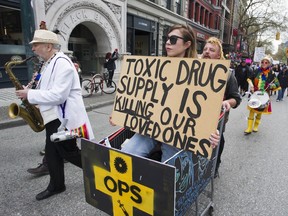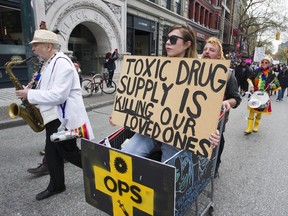Vaughn Palmer: Short-lived ministry spent most of its money on staff and public relations
Get the latest from Vaughn Palmer straight to your inbox

Article content
VICTORIA — Premier David Eby denied the obvious this week when asked if the NDP government’s abandonment of a stand-alone Ministry of Mental Health and Addictions was a public admission of failure.
“No not at all,” Eby told reporters in announcing that Mental Health and Addictions would be absorbed back into the Ministry of Health, from whence it came in 2017.
Advertisement 2
Article content
The move simply acknowledged the challenge of delivering treatment and facilities for mental health and addiction “through a ministry that was separate from the Ministry of Health,” said the premier.
The New Democrats were warned about those difficulties from the outset.
When NDP premier John Horgan first announced the plan to establish a separate ministry, the then provincial health officer, Dr. Perry Kendall, came right out and said don’t do it.
“The funding for mental health and addiction is so intertwined with other ministries that creating a separate ministry runs the risk of distracting people from the actual work,” he said.
Treatment was spread over dozens of programs, six provincial health authorities and a variety of local service delivery agencies. Patients had complex needs that overlapped as well.
The separate ministry would need duplicate managers and its own experts in bureaucratic infighting.
“You want to be careful not to pull things apart,” said the provincial health officer. “An awful lot of time can be spent within the bureaucracy.”
The New Democrats ignored Kendall’s warnings and never stopped boasting about how they had created the country’s first and only Ministry of Mental Health and Addictions.
Article content
Advertisement 3
Article content
They were probably glad to see the back of Kendall when he retired in 2018, to be replaced by Dr. Bonnie Henry.
But when the government finally abandoned the experiment this week, the retired provincial health officer was ready with an explanation for what went wrong.
“While it always seems a good idea to create a separate ministry to get a focus on an area … (they) invariably end up failing to achieve their goal,” Kendall told Alec Lazenby of Postmedia News.
“Mostly because the resources are in the ‘big’ ministry and very hard to disentangle, bureaucracies want to ring-fence their dollars and, as in this case, it was no longer a problem for the Ministry of Health.”
The three cabinet members who oversaw mental health and addictions in succession “had no desire to confront (then health minister Adrian) Dix and impose their will on the parts of their agenda that were actually in his bailiwick,” said Kendall.
In short, he told them so.
Yet Eby, never one to admit mistakes, insists that the government is merely acting “to ensure that we’re able to deliver in the toxic drug crisis,” by putting mental health and addictions back in the Ministry of Health where — might as well admit it — it belongs.
Advertisement 4
Article content
The grand experiment is over, but not without costs.
By the time Mental Health and Addictions wraps up operations at the March 31, 2025, end of the fiscal year, it will have spent a seven-year total of $140 million.
More than $90 million, about two thirds of the total budget, went to wages and benefits for staff. The ministry was small but there was nothing modest about its staffing. At the top end are a half dozen executives making more than $1 million combined.
A further $20 million of the total budget went to advertising, consultants, overhead, and the like.
Only $30 million was spent on grants to outside organizations related to mental health and addictions, the very purpose that the ministry was established to serve. Mindful of that imbalance, Rob Shaw of CHEK news dubbed Mental Health and Addictions “the ministry of air” a few years ago.
I’ll leave it to advocates to suggest how the remainder of the ministry’s $140 million budget could have been spent to improve the lot of people addicted to drugs or with a mental illness.
But one could not ask for a more telling example of a ministry that mainly benefited those who work for it and the NDP political interest.
Advertisement 5
Article content
Judging from the annual reports, ministry staff appear to have spent a great deal of time presiding over dialogues, forums and consultations, launching communications strategies and issuing boiler plate news releases in response to the grim monthly opioid-death-toll news from the B.C. Coroners Service.
Missing from the reports are much data tracking the ministry’s supposed purpose “to improve the mental well-being of and reduce substance-use-related harms for all British Columbians.”
One has to look elsewhere to discover that during the life of the ministry, drug overdose deaths soared from 1,500 the year the New Democrats launched the ministry to 2,500 last year.
In bringing down the curtain this week, Eby announced that in place of the ministry, he was appointing a parliamentary secretary to deal with mental health and addictions.
She’s Amna Shah, newly elected NDP MLA for Surrey City Centre. As parliamentary secretary she’ll be paid an additional $18,000, in contrast to the millions squandered in the NDP’s experiment with an entire ministry of mental health and addictions.
Recommended from Editorial
Article content





Comments